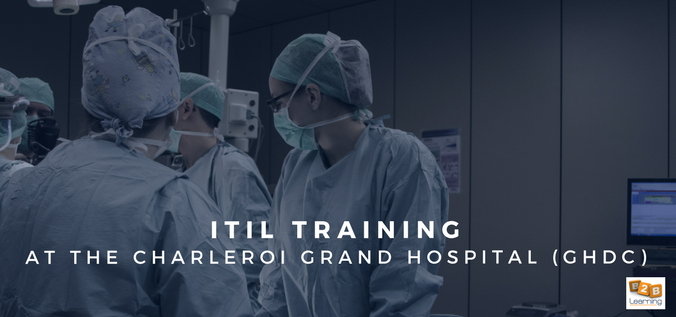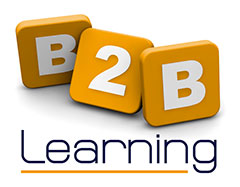Product successfully added to your shopping cart
ITIL Training - Ingrid Vael's story - Charleroi Grand Hospital (GHdC)
We met Ingrid Vael, responsible for the IT Development and Level 2 Service Centre of the Charleroi Grand Hospital (GHdC) to find out what drove her to follow the ITIL-trainings organised by B2B Learning and what this has brought her. Here follows the account of this conversation.

Can you explain the context which incited you to consider the ITIL-method?
At the heart of the IT-department there are 42 of us. The department is divided into 3 major sections: 1) Operations - Development, 2) Applications and 3) Infrastructures. The «Applications» and «Infrastructures» services comprise respectively the «appli» and «infra» project managers. The rest of the personnel is part of a pool, except the developers and configuration engineers who work on a case-by-case basis on specific assignments which the project managers allocate to them.
This way of handling the teams allows us to organise the necessary development resources in view of our department's small size. Indeed, 4500 people work at the heart of GHdC, we have a PC fleet of 2500 computers and more than 1000 printers. So, we are understaffed and expect to recruit more personnel. By the end of 2019, we should be a team of 65.
In parallel, GHdC is constructing a unique site to regroup smaller sites. If we want to build our future hospital, planned for 2023, and equip it with the latest digital technologies, we should pave the path for it today.
Are you also involved in any digital transformation projects?
Yes. At present, we are handling our patients' files with the assistance of different providers. While one concentrates on the specific medical file, another focuses on the specific treatment file. We'd like to have both integrated. Right now, we are working on a 100% centralised and integrated file.
Are any digital transformation experts assisting you in this project?
No, our IT-team takes care of everything. We visited hospitals in different countries and analysed what they had set up, so we could see how to adapt ourselves. For example, we are going to introduce an AVGS (automatic guided vehicle system) to take care of laundry and garbage (these tasks will be done through underground corridors and specialised elevators). We'll also introduce geo-referencing and place interactive terminals for the patients and visitors, …
What was your motivation to follow ITIL-training and to recommend it to your colleagues?
The aim of the ITIL-trainings was to let the IT-service evolve while refining little by little the changes to be implemented and in this way to understand if we were on the right track.
The past 4 or 5 years, we have gradually implemented different ITIL-changes, and we wanted every single colleague to understand why we are doing this transformation. Our people may be convinced or not, but at least we have given them the opportunity to comprehend the reason for the steps taken.
Has this approach brought you any daily advantages?
These trainings have allowed us to better control the incident management, to accept RFC's by more efficiently analysing costs and needs. Before this, questions came to us by telephone and the matter was solved in a hurry, with lots of back and forth, without really analysing the question's feasibility, timing or collective interest.
We couldn't let the user know the level of importance given to his file or how his case was evolving. Now, we can give each case its proper priority thanks to a centralised ticket-management system, which 4.500 workers at GHdC use. This represents a true added value for the client and we are nowadays considered a true service centre.
Anything specific we should keep in mind?
If you want to conceive ITIL as a good practice guide and not follow in the strict sense everything it proposes as a turnkey solution, the trainings represent a true opportunity to adapt to its environment. This requires, as I explained before, that you shouldn't fanatically cling to a theory, but instead you should participate with an open mind to a global analysis of the errors made in the past and how to remedy them in the best possible way.
Reviews









You must log in to give a review
Log in